|
USS Patterson DD-392
Initiation into the Shellbacks
(crossing the equator) |
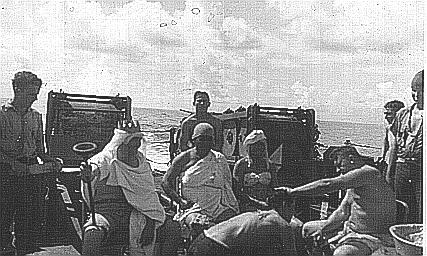
|
From the collection of Robert
Austin Coburn, Sr.
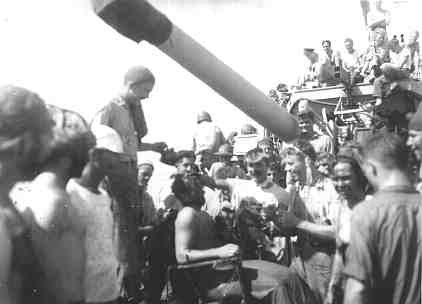
|
On crossing the equator for
the first time, "polliwogs" (those who had
never crossed it before) were initiated by "shellbacks" (those who had).
Intended as a friendly ritual of sea, initiations often got out of hand
and could become violent brawls, with hard feelings lasting a lifetime. Excerpt from Dad's
diary "20 Sep. Crossed Equator at 1:30 pm Initation into Shell back pretty
tough." |
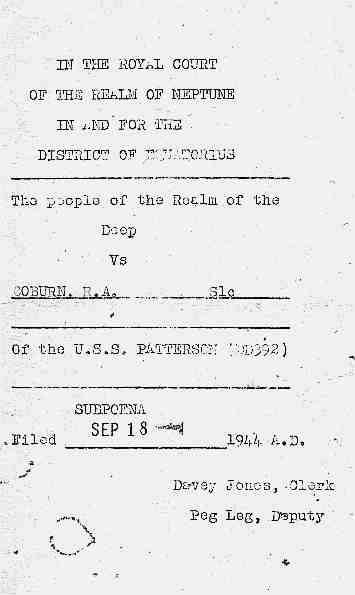
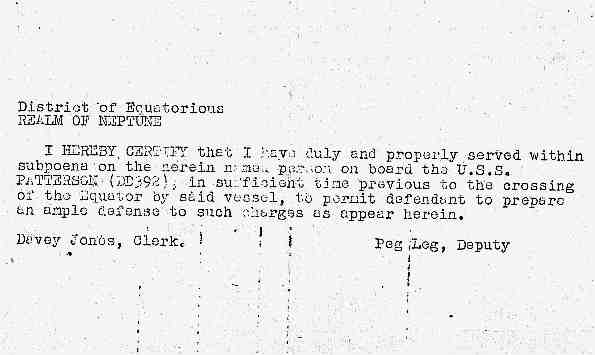
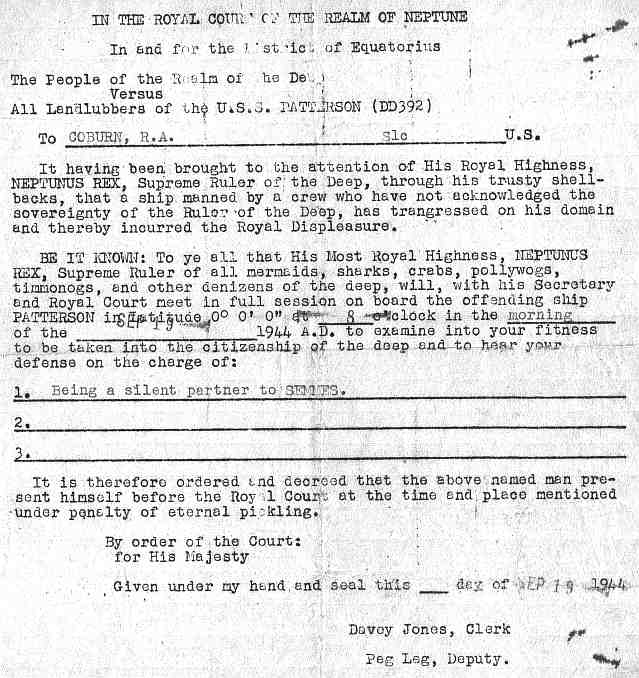

Experiment, at squadron commander's request, to launch a tethered
weather balloon while underway (perhaps for radio antenna?) Deck Division head
Jenning and Joe E. Bruman (far right) visible. Identification by : Joe R. Bruman, Asst. CIC Officer
From the collection of Robert Austin Coburn, Sr.
Rescue at Sea |
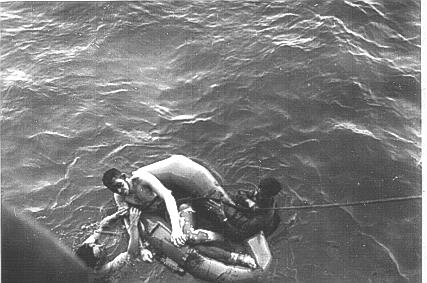
|
From the
collection of Robert Austin Coburn, Sr.
The following is from the Destroyers Online
page for the Patterson.
Jerry Krim ex-AM3c, a USS Belleau Wood CVL-24 crew member
who was rescued by the USS Patterson after the Belleau Wood was Kamikazed, believes this
picture could have been the rescue of a
badly burned Belleau Wood sailor.
Jerry and Executive Officer Childs are trying to
identify a
Belleau Wood seaman who tried so hard to keep a badly injured
sailor alive in the water as the Patterson maneuvered to pick them up.
Can you help identify that heroic young seaman?
|
Rescue at Sea
Rescue at sea was never easy. Many men were in critical condition, covered
with oil. If adrift in the water for days, as in the case of the USS Indianapolis
survivors, skin separated from muscle and rescue could cause grave injury if a sailor was
not handled carefully. Well intended ships could run down the men they were trying to
rescue.
The Japanese usually refused rescue, but not always. Sometimes those who refused
rescue were shot, to end it quickly. Others were left to the sea.
On a lighter note, when a carrier was at general quarters, planes that wouldn't catapult
were manually pushed into the sea. The destroyer or other vessel who rescued the
pilot would later trade him back to the carrier for ice cream.
* * *
A tip on surviving shipwreck from the 1943 Bluejackets' Manual
published by the United States Naval Academy.
Do not eat the liver or meat of sharks, skates, or rays unless you
have plenty of water. They are salty and will make you thirsty.
|
Transfer at Sea.
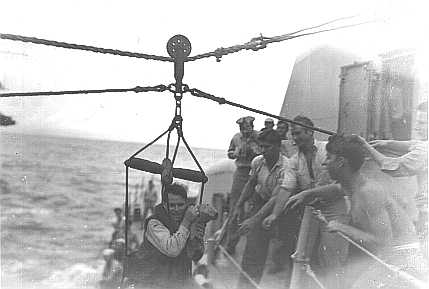
"LTJG Schroder in the breeches-buoy. Transfer underway was
always a hairy operation, requiring very careful steering to keep the connecting cable at
proper tension. This may have been a training exercise." Identification by : Joe R. Bruman, Asst. CIC
Officer
From the collection of Robert Austin Coburn, Sr.
|
Burial at Sea |
|
|
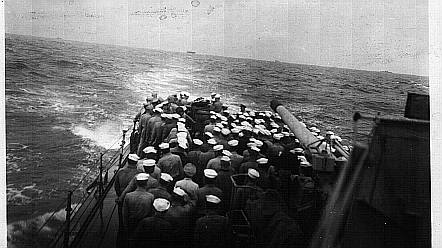
From the collection of Robert Austin Coburn, Sr.
Identification of this burial was contributed by Jerry Krim ex-AM3c who
was rescued by the USS Patterson October 30, 1944 after his ship, the USS Belleau Wood
CVL-24, was badly damaged by a Kamikaze, killing 92 shipmates. Jerry wrote that the
photo is the burial of two Belleau Wood shipmates who died the night of October 30 and
were buried off the stern of the Patterson the next day. A Patterson crewmember,
James P. McAlarney (now deceased), who he accidently met in 1946 in Jerry's hometown of
Hazleton, Pennsylvania, gave him the photo and told him it was two of the 13 seamen from
the Belleau Wood that were picked up.
Burial at Sea
The dead were wrapped in fabric mattress, weighted with 45 pound five
inch projectiles so they would sink without difficulty, and turned over
to the sea from a ship's fantail.. What is incomprehensible is that some
of the sailors who prepared the dead for burial were only 16; even more incomprehensible
is the fact that many of the dead were only the same.
|
|
Commentaries on this page and others are those of the webmaster for the Bagley Class
Destroyers located on Destroyers Online ,
Ms. Catherine Driessen.


|
